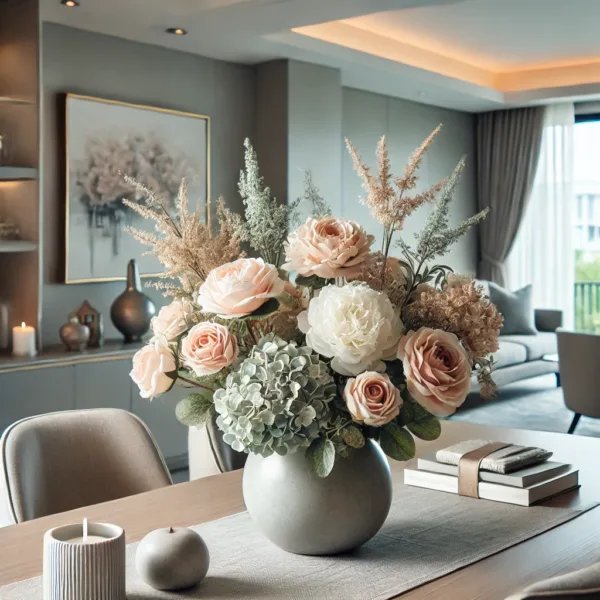
When arranging artificial flowers, it’s important to recognize that artificial flowers have come a long way from their early days of stiff plastics and unnatural colors. Today, they’re incredibly lifelike and if arranging artificial flowers is done right, they can be used to create stunning arrangements that rival their fresh counterparts. Whether you’re arranging artificial flowers to decorate your home, set up an event, or working on a DIY project, these designer tips will help you with arranging artificial flowers like a pro.
Understanding Balance and Symmetry in Floral Design
When arranging artificial flowers, balance and symmetry are the foundations of any well-designed floral arrangement. When working with artificial flowers, understanding these principles will ensure your creations look cohesive and pleasing to the eye.
- Asymmetrical vs. Symmetrical Arrangements: Symmetrical designs are often more formal and perfect for traditional settings. For example, matching heights and flower types on both sides of the arrangement create a sense of order. On the other hand, asymmetrical arrangements—with artificial flowers placed at varying heights and positions—offer a modern, natural vibe that mimics real-life garden aesthetics.
- Visual Weight: Pay attention to the “weight” of the artificial flowers and foliage. Large blooms like peonies and hydrangeas have more visual weight and should act as focal points. Balance these with smaller artificial flowers or greenery to create a harmonious flow.
- Use of Negative Space: Don’t overcrowd your arrangement. Negative space—the empty areas—allows individual elements to stand out and prevents your design from looking too busy.
Pro Tip: Always step back and view how you are arranging artificial flowers. Make sure to check the arrangement of artificial flowers from different angles. This will help you spot areas that may need adjustment for better symmetry or balance.
Choosing the Right Vase for Your Arrangement
The vase you select when arranging artificial flowers can either elevate or detract from your floral design. When arranging artificial flowers, choosing the right vessel is just as important as arranging the blooms.
- Size Matters: The vase should be proportional to your arrangement. A tall vase works well with long-stemmed artificial flowers like orchids or lilies, while a shorter vase pairs nicely with compact arrangements featuring roses or succulents.
- Shape and Style: Match the vase’s style to the overall theme of your artificial flowers arrangement. For a minimalist design, go with clean lines and neutral colors. For a vintage or rustic look, consider distressed ceramics, mason jars, or galvanized metal buckets.
- Transparency: Clear glass vases can add an elegant touch, but they also reveal the stems. Make sure to either arrange the stems neatly or camouflage them with faux water, decorative stones, or moss.
Pro Tip: Weighted bases are ideal for arranging artificial flowers, as they add stability and prevent tipping.
Mixing Colors and Textures for a Natural Look
One of the key challenges with arranging artificial flowers is achieving a natural appearance. Mixing colors and textures when arranging artificial flowers can help you overcome this and create arrangements that look as though they were freshly picked from a garden.
- Color Theory: Use a combination of complementary and analogous colors to create depth and harmony. For example, pair purples and yellows for a vibrant contrast or use varying shades of pink for a monochromatic, elegant look.
- Layering Textures: Combine different textures—soft petals, delicate grasses, and bold greenery—to mimic the diversity found in nature. For example, pairing soft rose petals with spiky eucalyptus leaves creates a dynamic arrangement.
- Seasonal Inspiration: Draw inspiration from seasonal palettes and blooms. Spring arrangements might feature pastels and blossoms like tulips, while autumn designs could incorporate deep oranges, browns, and dried foliage.
Pro Tip: When arranging artificial flowers, avoid overly uniform arrangements by incorporating “imperfect” elements like slightly bent stems or uneven petal spacing.
Pro Tips for Trimming and Shaping Artificial Stems
When arranging artificial flowers, you may find that your artificial flowers often come with long, straight stems that may require trimming and shaping to fit your design. Here’s how to do it like a pro:
- Use the Right Tools: Invest in a quality pair of wire cutters to trim stems cleanly. Floral tape and wire can also be helpful for reinforcing or reshaping stems.
- Measure Before Cutting: Always measure the stem against your vase or arrangement before making any cuts. It’s better to cut incrementally than to end up with stems that are too short.
- Bend for Realism: Many artificial stems are made with flexible wire cores, allowing you to bend and curve them for a more natural appearance. Gently arching stems can mimic the way flowers grow in nature.
- Shape Petals and Leaves: Sometimes, petals and leaves may look flattened from packaging. Use your fingers to fluff and shape them, or apply gentle heat (like from a hairdryer) to soften and reshape plastic elements.
Pro Tip: Keep your trimmed stems! They can be repurposed for when arranging artificial flowers in a smaller arrangement or as filler pieces.
How to Create Eye-Catching Centerpieces
When arranging artificial flowers, centerpieces are often the focal point of a room or table, so they need to make an impact. Follow these tips to create show-stopping designs:
- Height Variations: Vary the height of your arrangement to create visual interest. Use tall, statement flowers in the center and shorter blooms or greenery around the edges.
- Anchor with a Focal Point: Every great centerpiece has a standout element. This could be a large, colorful bloom or an unexpected accessory like a decorative orb or candle.
- Add Layers: Build your arrangement of artificial flowers in layers, starting with greenery as the base. Gradually add flowers, working from larger to smaller elements.
- Incorporate Accessories: Enhance your centerpiece with complementary accessories like LED fairy lights, ribbons, or seasonal accents (e.g., pinecones for winter, seashells for summer).
- Consider the Viewing Angle: Centerpieces should look good from all sides. Rotate your arrangement of artificial flowers as you work to ensure it’s appealing from every perspective.
Pro Tip: If arranging artificial flowers as a centerpiece on a dining table, keep it low enough to allow for conversation across the table.
Conclusion
By following these designer tips, you can become a pro at arranging artificial flowers and create stunning arrangements of artificial flowers that look professional and polished. Whether you’re a novice or an experienced crafter, these techniques will elevate your designs and impress anyone who sees them. Looking for more resources about artificial plants? Check out our ultimate guide to artificial flowers and plants.

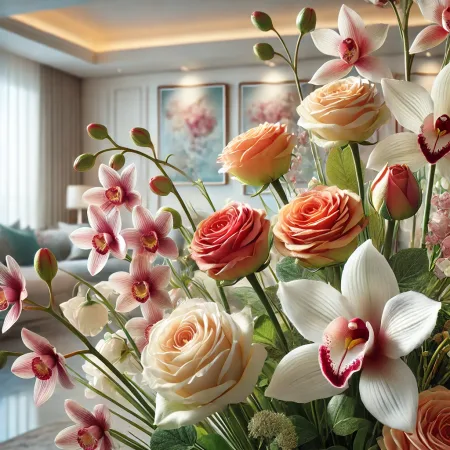
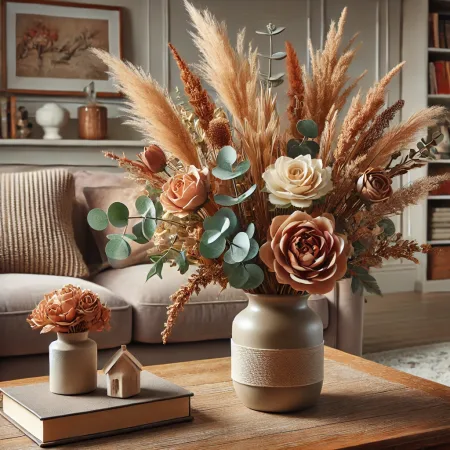
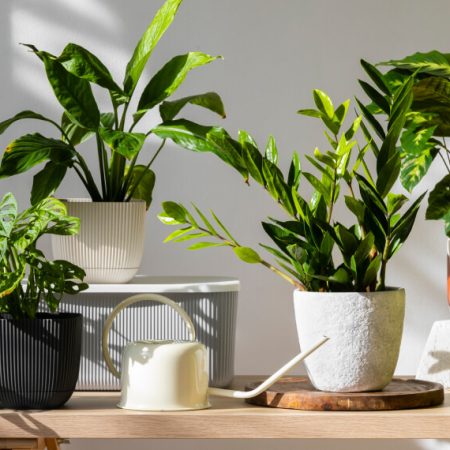
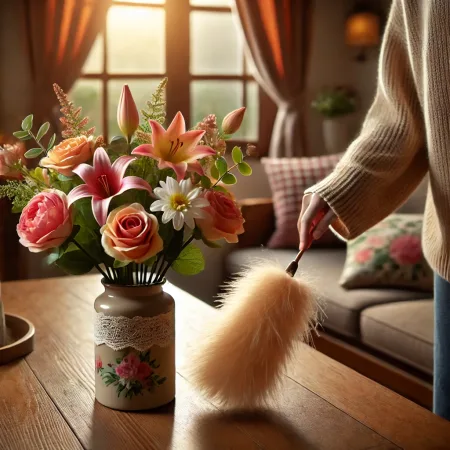
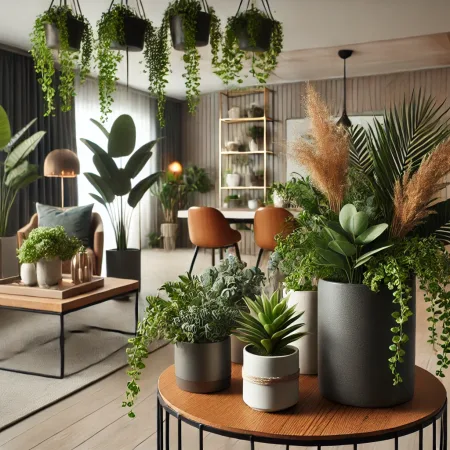

Comments are closed